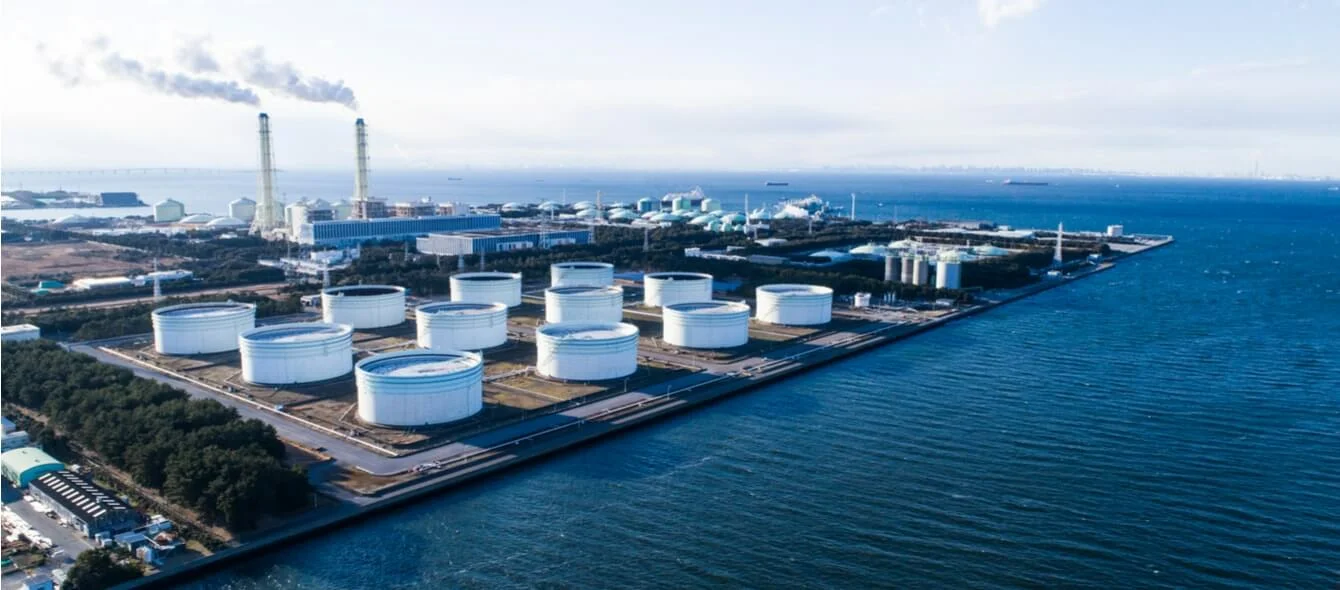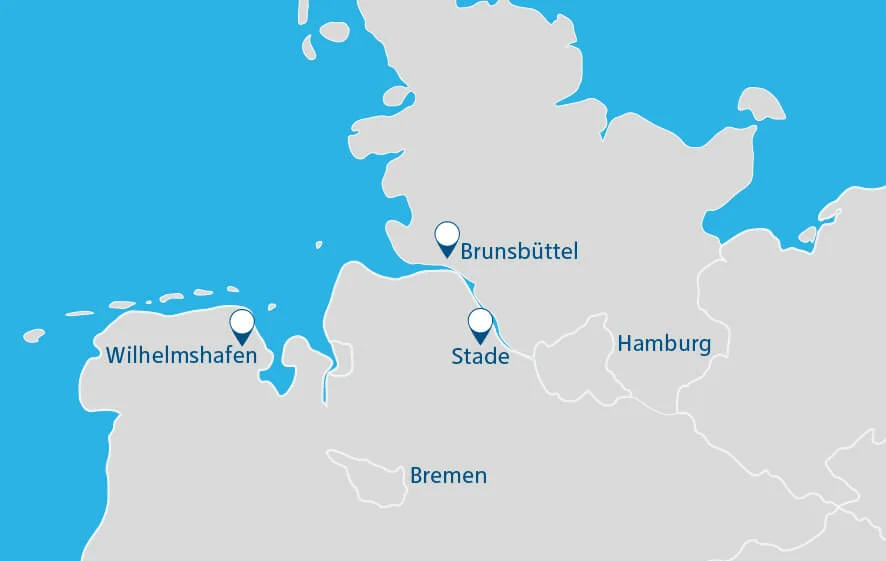As of yet, there is only one way to transport natural gas to Germany: through pipelines, primarily from Norway, Russia and the Netherlands. However, in order to guarantee security of supply in the long term, to purchase gas worldwide and thus be able to react flexibly to price increases, the Federal Ministry of Economics and Technology wants for Germany what other EU countries have long had: special terminals in which what is referred to as LNG, Liquefied Natural Gas, can arrive by ship from all over the world.
As the largest producer and exporter of natural gas in the EU, the Netherlands is planning to massively wind down its capacity from 2023 onwards in order to completely phase out production by 2030 – the country already has its own LNG terminal for gas imports by ship. Many other EU countries are now also relying on this infrastructure. Greece has not only had its own terminal, which was recently re-expanded in 2018, for many years, but also ordered 33 new LNG tankers in the last year alone – more than any other country.
From which countries does Germany import natural gas?
Share in percent of imported gas volume in 2017 (Source: statista)Given that experts believe that demand for gas in Germany will continue to grow as a result of the coal and nuclear power phase out, many investors see liquid gas as an opportunity. Three possible locations are up for discussion: Brunsbüttel in Schleswig-Holstein and Wilhelmshaven and Stade in Lower Saxony. The plans are apparently most advanced in Brunsbüttel, where the state government of Schleswig-Holstein has also been supporting the project. Its geographical proximity to the port of Hamburg, its location directly at the confluence of the Kiel Canal and the Elbe – not to mention the local energy-intensive industry – are all factors which support the case for this small town.
To liquefy natural gas, it must be cooled to between minus 161 and 164 degrees Celsius. The volume of liquid gas is only about one six hundredth of the volume of gaseous natural gas. Special ships transport the LNG to the terminals, where they unload it with the ship’s own pumps. The gas is then kept refrigerated in the terminal containers until it is transported further or regasified, i.e. converted back into its gaseous state.
Brunsbüttel operations could begin as early as 2022
The German LNG Terminal GmbH Consortium, including stakeholders such as the German logistics service provider for mineral oils, chemicals and gases Oiltanking and the two Dutch companies Gasunie and Vopak, intends to apply for approval for its terminal in March. If everything goes according to plan, there could be a decision on financing by the end of the year with construction kicking off in 2020. Operations are expected to launch by late 2022.
A preliminary agreement with RWE has been in place since September 2018, under which the company has already secured potential capacities. In February, Daan Vos, Managing Director of Oiltanking until the end of March, told Handelsblatt that another preliminary agreement had been signed with an “important player in the LNG market”. In the long term, this contracting partner was said to want to use a “considerable portion” of the future terminal capacities. Based on current figures, these capacities are expected to amount to eight billion cubic metres of gas per year. In 2017, natural gas consumption in Germany amounted to 90 billion cubic metres – making it possible for the terminal to cover around 7 percent of demand at full capacity.
Floating terminal planned for Wilhelmshaven
Wilhelmshaven’s plans are on a slightly larger scale than those of Brunsbüttel: The city wants to provide a floating terminal, which could potentially begin operating in the latter half of 2022 and is expected to offer an annual capacity of ten billion cubic metres. By way of comparison: Europe’s current largest LNG terminal in Barcelona has a capacity of about 18 billion cubic metres. The investors in Wilhelmshaven, the energy supplier Uniper and the Japanese shipping company Mitsui OSK Lines, have already signed a preliminary agreement with the US mineral oil company Exxon Mobil Corporation for long-term bookings of large regasification capacities.
In December 2018, Wirtschaftswoche quoted Uniper manager Keith Martin as saying that the location benefited from the deep-sea port, a direct connection to the pipeline network and nearby gas storage facilities. In addition, “a number of approval processes” had already been completed.
Minister of Economics promises state funding
Economics Minister Peter Altmaier is currently talking about the possibility of “at least two terminals” becoming a reality. “This is an important, necessary transitional step en route to a sustainable hydrogen economy, which can, however, only be achieved in the medium and long term.”
In February, Chancellor Angela Merkel also promised that Germany would expedite its plans to set up an LNG terminal “in order to be able to draw on other energy sources.” For this purpose, the Federal Government has recently decided that it is no longer the investors, but the gas network operators have to bear the costs for connecting the terminals to the gas network. The construction of the terminals will be much cheaper for the investors.
In addition, the state is to subsidise the terminals with a “substantial sum” of money, for example through funds from the joint scheme for the improvement of regional economic structures (GRW). A programme of the Federal Ministry of Transport to promote LNG infrastructure for ships is also mentioned repeatedly in this context.
LNG significantly more expensive than pipeline gas
Critics complain, however, that there are already more than enough European terminal capacities for the currently available LNG. In addition, liquid gas is currently much more expensive than conventional pipeline gas: To liquefy and reduce its volume, the gas must be cooled to around minus 160 degrees Celsius. Nevertheless, Minister Altmaier is confident that prices will fall dramatically over the next ten years due to lower transport costs, higher production capacity in the US and more competition on the market.
What is LNG? Turning natural gas into liquid
Photo credits: Leonardo da, shutterstock.com

